Data, transmission, model, type, coordination, device, message, frame, structure, layer
1. Data transmission model
There are three types of data transmission methods.The first is that the device sends data to the coordinator, the second is that the coordinator sends data to the device, and the third is the data transmission between peer devices (such as data transmission between routes in a ZigBee network).
01 The device sends data to the coordinator
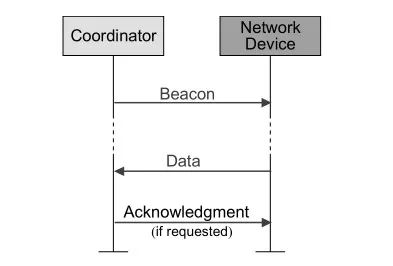
When the device sends data to a coordinator that supports beacon, it first needs to monitor the network beacon frame. When the beacon frame is found, the device synchronizes with the superframe structure, and the device sends data to the coordinator at the appropriate time.After receiving the data, the coordinator responds to the device with an ACK to indicate that it has been successfully received. The specific process is shown in the figure above.
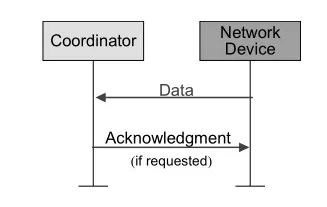
When the device sends data to a coordinator that does not support beacon, it only needs to send the data to the coordinator. When the coordinator receives the data, it will reply to the device with an ACK indicating successful reception. The specific process is shown in the figure above.
02 The coordinator sends data to the device
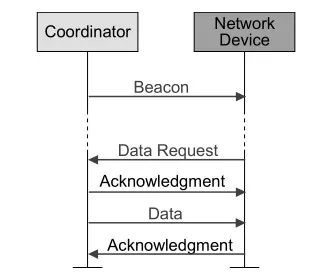
In a beacon-enabled network, when the coordinator wants to send data to the device, first, the coordinator indicates in the network beacon that the data message has been suspended.Secondly, the device regularly listens for network beacons, and if there is a message waiting, it sends a MAC request data frame.Secondly, when the coordinator receives the MAC request data frame sent by the device, it responds to the ACK frame to the device to confirm the successful reception of the data request.Then, the coordinator sends the prepared data to the device, and the device responds with an ACK after receiving it.The specific process is shown in the figure above.
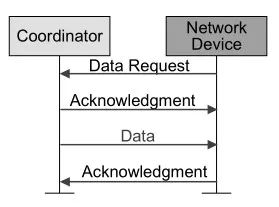
In a network without beacon enabled, when the coordinator wants to transmit data to the device, first, the coordinator temporarily stores the data to be sent to the device so that the device can send a data request frame to request data.Secondly, when the coordinator receives the data request frame sent by the device, the coordinator first responds with an ACK to the device to indicate that the data request has been received.Then, the coordinator sends the data to the device.Finally, when the device receives the data, it responds to the coordinator with an ACK to indicate that the data is received.The specific process is shown in the figure above.
03 Data transmission between peer devices
In a peer-to-peer network, every device can communicate with other devices within its radio range. In order to achieve this, the devices in the network need to be synchronized. For example, in a ZigBee network, routing devices will periodically broadcast routing information to synchronize.
2. Introduction to frame structure
The design of the frame structure mainly considers two aspects, one is to make the frame structure as simple as possible, and the other is to ensure that the robustness is maintained when transmitting in a noisy channel.The protocol of each layer will add the relevant head and tail of this layer to this structure.The IEEE802.15.4 standard defines 4 frame structures:
A beacon frame (beacon frame), used by the coordinator to send a beacon frame
A data frame (data frame), used to send data
An acknowledgment frame (ACK frame), used to confirm the successful reception
A MAC command frame (command frame), used to handle the control transmission of all MAC peer entities
01 Beacon frame (beacon frame)
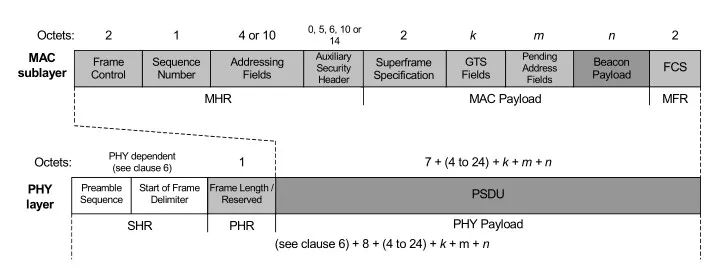
The figure above shows the structure of the beacon frame, which originated inside the MAC sublayer.The coordinator can transmit web beacons in a beacon-enabled PAN.The frame header (MHR) contains the frame control domain, frame serial number, address domain, and additional security header.The MAC payload contains the superframe specification, the GTS field, the pending address field, and the beacon payload.The end of frame (MFR) contains a 16-bit frame check sequence (FCS).MHR, MAC Payload and MFR together form a MAC beacon frame (MPDU).The MAC beacon frame is then passed as a PHY service data unit (PSDU) to the PHY load of the PHY layer (physical layer).
02 Date frame (data frame)

The data payload is passed to the MAC sublayer, which is called the MAC service data unit (MSDU).The MAC payload is prefixed with MHR and MFR is attached.MHR contains the frame control domain, frame serial number, address domain, and additional security header.MFR contains 16-bit FCS validations.MHR, MACPayload, and MFR together form a MAC data frame (MPDU).The MPDU is passed to the PHY as a PSDU and becomes the payload of the PHY.
03 Acknowledgment frame (ACK frame)
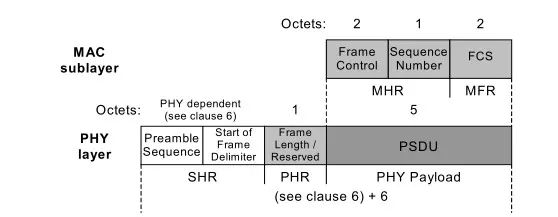
The figure above shows the structure of the ACK confirmation frame, which originated inside the MAC sublayer.The ACK confirmation frame consists of a header (MHR) and a tail (MFR), and it has no MAC payload.MHR contains the frame control domain and the frame serial number.MFR contains 16-bit FCS validations.MHR and MFR together constitute a MAC ACK confirmation frame (MPDU).The MPDU is passed to the PHY as a PSDU, and it becomes the PHY payload.
04 MAC command frame (command frame)

The figure above shows the structure of the MAC command frame, which originated inside the MAC sublayer.The MAC payload contains two parts: the command type and the command payload.The MAC payload is prefixed with MHR and MFR is attached.MHR contains the frame control domain, frame serial number, address domain, and additional security header.MFR contains a 16-bit FCS validator.MHR, MACPayload, and MFR together form the MAC command frame (MPDU).The MPDU is passed to the PHY as a PSDU and becomes the payload of the PHY.
Ebyte Electronic Technology Co., Ltd. specializes in the development and production of wireless data transmission modules with various functions in various frequency bands. The products have been widely used in various application scenarios such as the Internet of Things, consumer electronics, industrial control, medical, smart home, highway, etc. If you have any needs, please contact email:service-es-@cdebyte.com Or visit the website:https://www.es-ebyte.com/
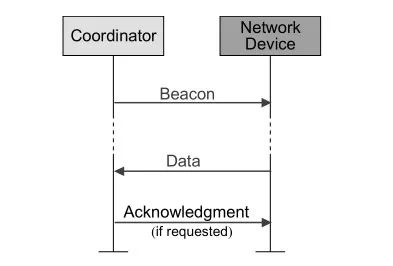

No comments yet